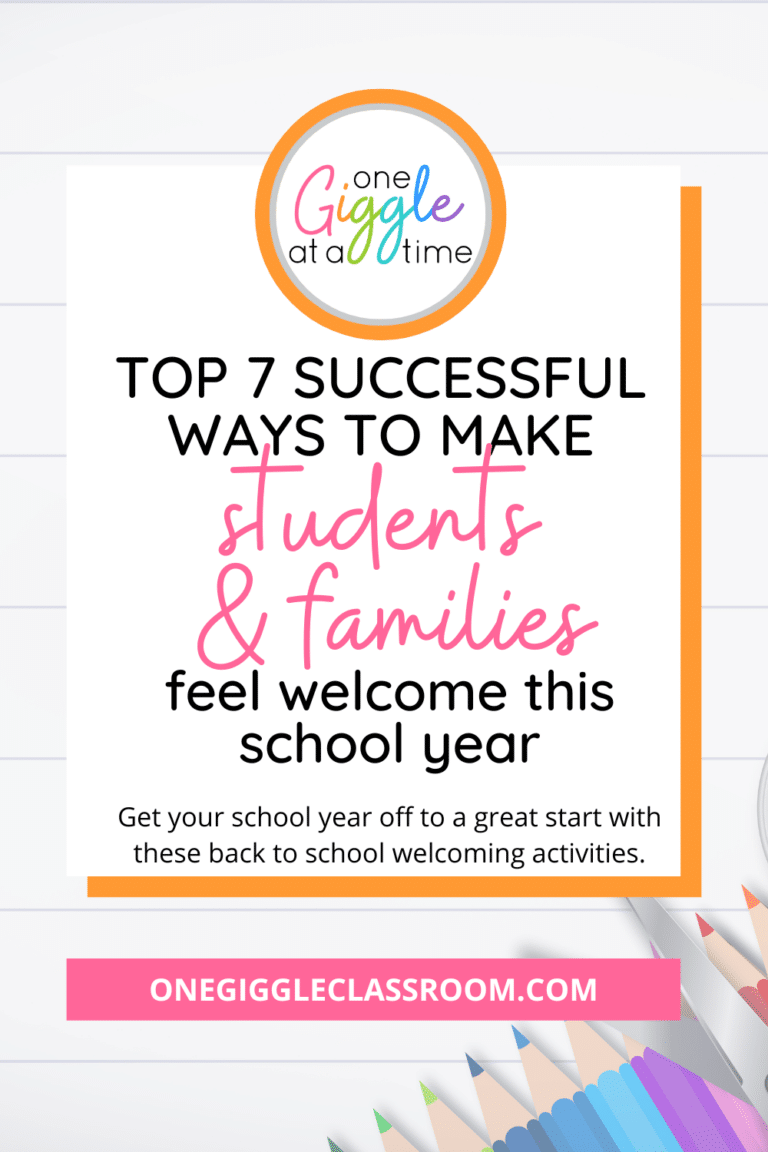
Separation Anxiety in Children: 8 PROVEN Strategies for Smooth Transitions
Share This:

Separation anxiety in children is a common childhood challenge. It often manifests as tears, clinginess, or resistance during drop-off times. Transitions to the classroom can be quite difficult for children, their caregivers, and you! Understanding and addressing separation anxiety in children is essential for creating a supportive and nurturing classroom environment. Use these 8 proven strategies for smooth transitions to help your students experiencing separation anxiety.
More about Separation Anxiety in Children
While separation anxiety is normal for many children to experience at some point in their early years, for some children it persists further into school years.
Separation anxiety doesn’t just manifest through emotional distress or physical symptoms like crying. It can have a negative impact on a child’s ability to engage fully in learning. And while separation anxiety is not likely to personally impact many of your elementary students, the effects can reach your entire classroom.
When you have to help an upset student with difficult transitions often, this can disrupt the classroom dynamics and routines. In the stress of these moments, you find yourself scrambling to adapt to continue to provide the best individualized support for all of your students.
Thankfully, you can EASILY implement these 8 proven strategies to help create smooth transitions that will benefit all of your students!
8 Strategies for Smooth Transitions
- Establish Routines
- Use Positive Reinforcement
- Use Social Skills Stories
- Create a Safe Space
- Validate Feelings
- Read Children’s Books
- Teach Coping Strategies
- Seek Outside Support
1. Establish Routines
Consistent daily routines can provide children with a sense of predictability and security.
Establishing a successful morning routine can reduce the chaos that feels so unsettling to students who deal with anxiety.

When students (and their parents!) know what to expect when they enter the classroom, separations are easier for everyone!
2. Use Positive Reinforcement
Positive reinforcement is also effective for creating smooth transitions to combat separation anxiety in children. It’s so simple too!

Praise and reward your students when they handle separations well. Use a mixture of verbal and written words. Your words provide invaluable encouragement and reinforce students’ abilities to cope with their anxiety.
3. Use Social Skills Stories
Next up– social skills stories!
Help students learn how to talk about their big feelings. Use social stories to guide them in developing a strong understanding of their emotions and effective strategies to use to cope with them.
This Separation Anxiety social skills story set includes an engaging and easy-to-use social skills story and related activities designed to reinforce learning. This resource is ideal for cultivating a positive classroom environment that fosters healthy self-management, social awareness, and responsible decision-making! Students will easily understand different ways they can cope with their emotions while they’re apart from their special adult(s).
The Self Regulation social skills story is another great option for students dealing with difficult transitions due to anxiety from separations.
*Both of these options are reusable and perfect for substitutes also!
4. Create a Safe Space
Help your students know that they are safe in your classroom. Create a space where students can express themselves through art, re-read familiar social skills stories, and practice mindfulness techniques.
Make this space feel special with a few decorations and comforting items like bean bags and pillows. This extra coziness will help students feel secure when big emotions like anxiety or overwhelm feel like they are taking over.
5. Validate Feelings
Acknowledging and validating your child’s feelings is another extremely important (and simple!) strategy to use with students experiencing separation anxiety.
Encourage students to place their worries in your classroom Worry Jar or use journal pages to write about their feelings.
Without dismissing them, let your students know that it’s okay to feel nervous and that you’re there to support them.
6. Read Children’s Books
Children’s books are another great strategy to use to aid in smooth transitions to and from the classroom.
*This post contains some affiliate links. As an Amazon Associate, I earn from qualifying purchases.
Books help keep children engaged and aid in building emotional connections through relatable characters and plots. You will also find it easier to engage in discussions with your students after reading enjoyable books together!
The Invisible String by Patrice Karst and What to Do When You Don’t Want to Be Apart by Kristen Lavallee are both wonderful options to add to your classroom library to help students process feelings of separation anxiety!
7. Teach Coping Strategies
Model specific coping strategies to address separation anxiety in children too.
Teach different breathing and muscle relaxation exercises that they can use to calm their bodies and minds when they have big emotions during separations.
You can find helpful, done-for-you cards to practice and use with students in this Emotional Regulation Strategies Bundle!
8. Seek Outside Support
And sometimes, despite your very best efforts, students will need more support– and that’s okay!
If a child’s separation anxiety persists or interferes significantly with daily school activities, consider seeking guidance from the school counselor, a pediatrician, or a mental health professional for additional support and strategies.
Finally, don’t forget to celebrate the wins! Acknowledge reunions with caregivers at the end of the school day. Your intentional celebrations reinforce the idea that separations are temporary and reunions are joyful! You CAN successfully use strategies for smooth transitions to help your students with separation anxiety!
Let me know if you have any questions about anything you see here. Don’t forget to pin this post to refer to it later!

Other posts you may enjoy:
How to Successfully Prepare Your Child for a Smooth Transition to Kindergarten
11 ENGAGING Ways to Teach Social-Emotional Learning in the Classroom
The Importance of Using Emotional Regulation Strategies in the Classroom
KEEP THE HOME-SCHOOL CONNECTION OPEN WITH THESE
Free Positive Notes Home
The perfect way to build a strong working relationship with the families of your students!


Diane Romo
Thank you for being here! I love sharing ideas with other teachers! If you are looking to enhance your teaching and build a positive classroom community, you have come to the right place!




















